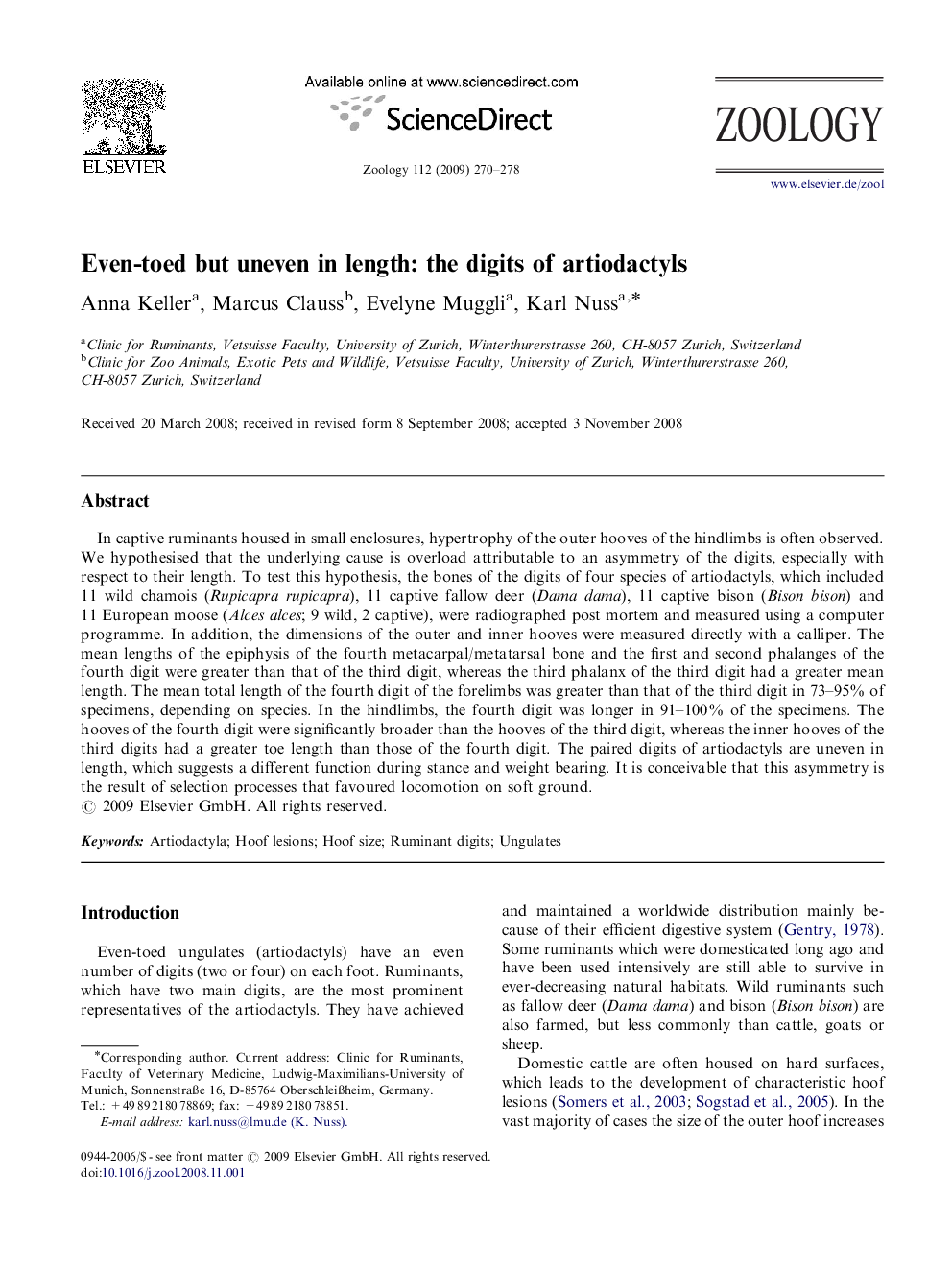| Article ID | Journal | Published Year | Pages | File Type |
|---|---|---|---|---|
| 2791313 | Zoology | 2009 | 9 Pages |
Abstract
In captive ruminants housed in small enclosures, hypertrophy of the outer hooves of the hindlimbs is often observed. We hypothesised that the underlying cause is overload attributable to an asymmetry of the digits, especially with respect to their length. To test this hypothesis, the bones of the digits of four species of artiodactyls, which included 11 wild chamois (Rupicapra rupicapra), 11 captive fallow deer (Dama dama), 11 captive bison (Bison bison) and 11 European moose (Alces alces; 9 wild, 2 captive), were radiographed post mortem and measured using a computer programme. In addition, the dimensions of the outer and inner hooves were measured directly with a calliper. The mean lengths of the epiphysis of the fourth metacarpal/metatarsal bone and the first and second phalanges of the fourth digit were greater than that of the third digit, whereas the third phalanx of the third digit had a greater mean length. The mean total length of the fourth digit of the forelimbs was greater than that of the third digit in 73-95% of specimens, depending on species. In the hindlimbs, the fourth digit was longer in 91-100% of the specimens. The hooves of the fourth digit were significantly broader than the hooves of the third digit, whereas the inner hooves of the third digits had a greater toe length than those of the fourth digit. The paired digits of artiodactyls are uneven in length, which suggests a different function during stance and weight bearing. It is conceivable that this asymmetry is the result of selection processes that favoured locomotion on soft ground.
Keywords
Related Topics
Life Sciences
Agricultural and Biological Sciences
Animal Science and Zoology
Authors
Anna Keller, Marcus Clauss, Evelyne Muggli, Karl Nuss,
